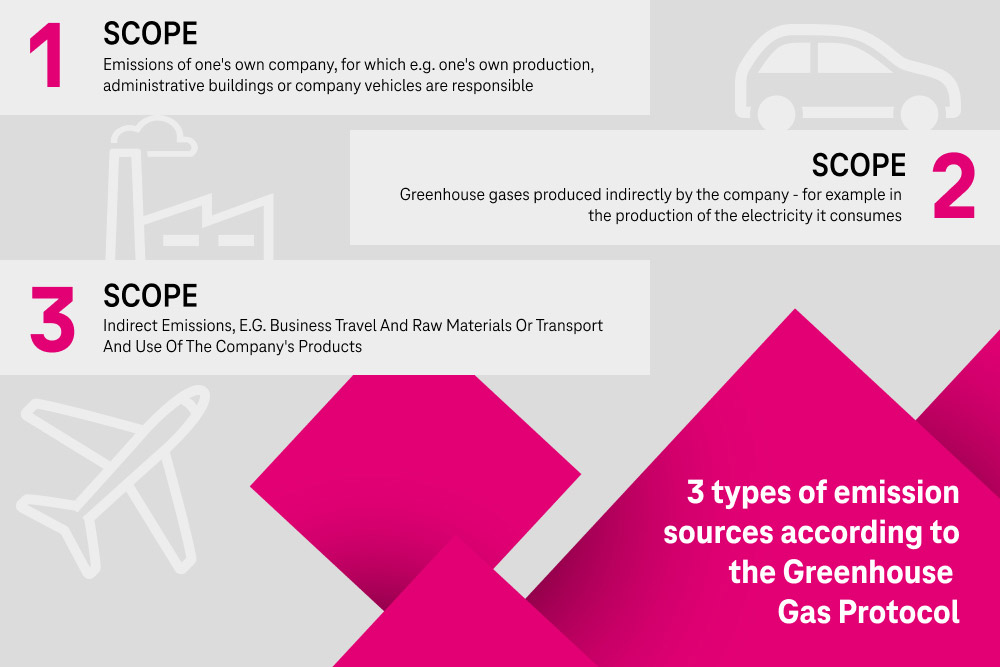
When it comes to sustainability, all industries and companies are increasingly challenged by regulations, partners and customers. Gone are the days of solitary actors and spin. Furthermore, globalization, the ongoing shortage of skilled workers, and the associated cautious use of new technologies are having a negative impact. What is needed here is co-creation: pooling skills to address complex issues and help shape a sustainable future.

Let us consider, for example, a product’s footprint from creation to use. Supply chains are complex things. Picture the supply chain of a German car manufacturer: while the vehicle is assembled in Germany, components such as microchips, cable harnesses, and - in the case of e-cars, the batteries and materials used to make them are often imported from all over the world.
Numerous businesses are involved in a vast global network. It is precisely this complexity that makes it so difficult to seamlessly review, optimize, and document a supply chain’s sustainability. How many CO₂ emissions are generated within the supply chain and where? What about the footprint associated with employee mobility, and how can this be reduced along with commuter traffic? Since reporting obligations are becoming more numerous and stringent, many companies have no alternative but to do just these things. The goal is clear for all to see.
These questions are typical for businesses on the path to net zero, i.e., having a neutral impact on the climate by reducing their footprint. Solutions can only be developed with the help of partners, such as a data space for environmental data along the supply chain or mobility solutions for reducing commuter traffic to company premises.
Alongside the reduction of emissions, companies must also adapt their business models. With this in mind, they must transform their value streams into a circular economy. Reuse, repair, refurbish, and repurpose are the keywords here for adapting existing production processes. Customers will use services and products differently and restrict them through sufficiency approaches (e.g., long-distance travel).
These necessary changes simultaneously present an enormous opportunity. Gartner talks here about sustainability replacing the wave of digitalization. Likewise, the importance of the green transition for the economy is demonstrated by the EU’s reaction to the Inflation Reduction Act in the U.S.: an insanely huge market is emerging for sustainability solutions, which can most effectively be realized within the scope of cross-industry collaboration.
Many factors assist businesses in achieving their sustainability goals. To this end, we have ten action fields from various interviews with environmental, social, and governance (ESG) leaders. All action fields need to be addressed, but two, in particular, stand out:
After these two come:

Since the challenges in these action fields are complex, cooperation becomes particularly valuable, if not essential. Because we and the environment have run out of time, there is no room for mistakes. Diminishing resources and worries about the high costs associated with a sustainable transformation complicate matters further.
Studies show that by 2030, there will be a shortage of around 85 million skilled workers. Experts are desperately needed to implement climate and environmental protection comprehensively. Fundamentally, this concerns ecological and social responsibility and the urgency to meet ESG criteria. Given the talent deficit, the benefits of co-creation are clear to see.
I want to delve into how valuable – and, at the current time, how necessary – collaboration is with the help of the Greenhouse Gas (GHG) Protocol. Many companies have come to use the protocol to define their specific sustainability goals.
When businesses operate sustainably in all three scopes, management complexity increases. With this in mind, a telecommunications provider like Telekom must not only ensure manufacturers are producing cell phones in an environmentally sustainable way but also keep an eye on the devices when they reach the end consumer.
For example, the provider must increase the return rate for cell phones to put them back into use (reuse/repair) if possible or recycle them to save valuable raw materials. This, in turn, requires intensive cooperation with logistics specialists, the key phrase here being ‘reverse logistics’.
And with all this, the impact of these measures on the sustainability of the business and its products must be consistently documentable. So, the entire value chain must be mapped within a company's sustainability strategy – simply looking at your own industry is no longer sufficient. Scope 3 sustainability is undoubtedly a challenge - and a decisively important one at that - because the majority of emissions a business is responsible for do not stem from the first two scopes.
A greener future can be realized more quickly with co-creation. This is precisely where the T-Systems Co-Creation Advisory Board comes into play. A meeting point for businesses across all industries – true to the motto ‘Rethink the system’. With the power of innovation and the know-how of experts and partners, new use cases can be derived from established best practices. This way, original requirements and suitable use cases are closely aligned with design thinking as an elementary component.
During the co-creation process, participants have the opportunity to obtain exactly the solutions they need inside a unique, cross-sector ecosystem without being dependent on the developments of central providers. Consequently, sustainability becomes more economical too. As the event is embedded into the EU funding program IPCEI-CIS, companies can apply for additional funding from the European Union during further development to reduce the time to market for innovations.
Sustainability solutions are set to grow exponentially. As an IT service provider, we want to be a part of this process alongside our partners and clients. I invite you to become a part of this community, and together we will tackle the sustainability goals of businesses and society as a whole. Exciting weeks of collaborative product development are ahead.
It all kicks off with an Inspiration Day on March 7, the goal of which is to get to grips with the challenges presented by sustainability and learn from one another. Following this is Ideation Day on April 20. Here selected participants will realize their ideas and create initial prototypes. The program reaches its high point with Innovation Day on May 16. Participants will test the prototypes, set up pilot projects, and develop a minimum viable product. All events tie in with each other in terms of content and build on the idea of co-creation in the name of sustainability. We are all set for co-creation; what about you?
We look forward to seeing you at the events and speaking in person!
You can display all external content on the website at this point.
I agree that personal data may be transmitted to third-party platforms. Read more about this in our privacy policy.
Learn more about the challenges industries in achieving sustainability.